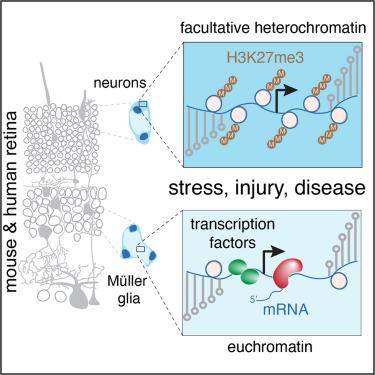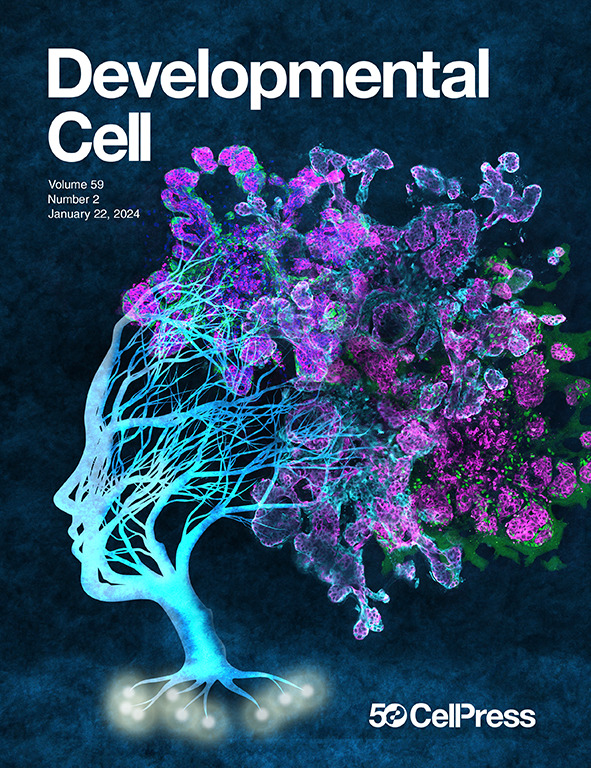Latent epigenetic programs in Müller glia contribute to stress and disease response in the retina
IF 10.7
1区 生物学
Q1 CELL BIOLOGY
引用次数: 0
Abstract
Previous studies have demonstrated the dynamic changes in chromatin structure during retinal development correlate with changes in gene expression. However, those studies lack cellular resolution. Here, we integrate single-cell RNA sequencing (scRNA-seq) and single-cell assay for transposase-accessible chromatin sequencing (scATAC-seq) with bulk data to identify cell-type-specific changes in chromatin structure during human and murine development. Although promoter activity is correlated with chromatin accessibility, we discovered several hundred genes that were transcriptionally silent but had accessible chromatin at their promoters. Most of those silent/accessible gene promoters were in Müller glial cells, which function to maintain retinal homeostasis and respond to stress, injury, or disease. We refer to these as “pliancy genes” because they allow the Müller glia to rapidly change their gene expression and cellular state in response to retinal insults. The Müller glial cell pliancy program is established during development, and we demonstrate that pliancy genes are important for regulating inflammation in the murine retina in vivo.

潜在的表观遗传程序在突触神经胶质有助于应激和疾病反应在视网膜
先前的研究表明,视网膜发育过程中染色质结构的动态变化与基因表达的变化有关。然而,这些研究缺乏细胞分辨率。在这里,我们将单细胞RNA测序(scRNA-seq)和单细胞转座酶可及染色质测序(scATAC-seq)与大量数据相结合,以鉴定人类和小鼠发育过程中细胞类型特异性染色质结构的变化。虽然启动子活性与染色质可及性相关,但我们发现了数百个转录沉默但在启动子处具有可及染色质的基因。这些沉默的/可接近的基因启动子大多存在于网膜神经胶质细胞中,其功能是维持视网膜稳态并对压力、损伤或疾病作出反应。我们将这些基因称为“柔韧性基因”,因为它们允许突触神经胶质在视网膜损伤时迅速改变其基因表达和细胞状态。神经胶质细胞的柔韧程序在发育过程中建立,我们证明了柔韧基因在小鼠视网膜体内调节炎症是重要的。
本文章由计算机程序翻译,如有差异,请以英文原文为准。
求助全文
约1分钟内获得全文
求助全文
来源期刊

Developmental cell
生物-发育生物学
CiteScore
18.90
自引率
1.70%
发文量
203
审稿时长
3-6 weeks
期刊介绍:
Developmental Cell, established in 2001, is a comprehensive journal that explores a wide range of topics in cell and developmental biology. Our publication encompasses work across various disciplines within biology, with a particular emphasis on investigating the intersections between cell biology, developmental biology, and other related fields. Our primary objective is to present research conducted through a cell biological perspective, addressing the essential mechanisms governing cell function, cellular interactions, and responses to the environment. Moreover, we focus on understanding the collective behavior of cells, culminating in the formation of tissues, organs, and whole organisms, while also investigating the consequences of any malfunctions in these intricate processes.
 求助内容:
求助内容: 应助结果提醒方式:
应助结果提醒方式:


